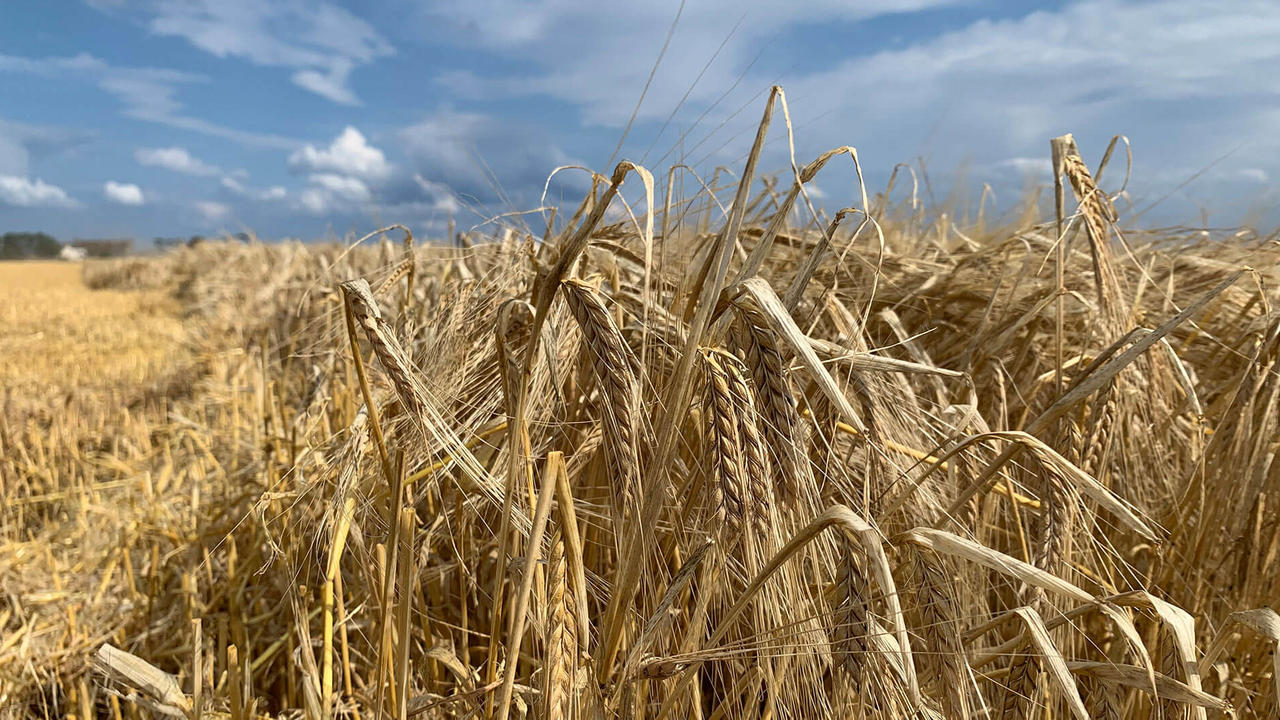Ever wondered what is whisky made from? Well, wonder no more because you're about to find out...
Whisky is made from malted barley, to which harvesting started earlier than usual this year in the Highlands. I was fortunate enough to join a local farmer in August as he and his team set to work in his first spring barley field of the harvest season. Peter Mackenzie works on Cullisse Farm in Ross-shire which has been run by his family since 1924.

Barley harvesting difficulties
It’s been a rather dry summer in Scotland, with some distilleries even reporting water shortages. Without water, there is no whisky, so it’s not surprising to hear that a few distilleries have had to suspend production this year. Water is key for germinating the grain and making the fermented mash, for example.
This isn’t good news, of course, but whisky needs time to complete the maturation process, which can take up to three years. However, even if the barley harvest has been difficult this year, there shouldn’t be shortages with different Scotch whiskies in the future. Barley harvesting may become possible by the autumn, reducing the impact of the dry weather on the barley fields. Barley production can be very versatile if required, so your favourite single malt Scotch whisky is safe for now!
Want to see the barley crop up close? Take a look at our EBS Whiskey Expedition for more details.

The barley harvesting process
I approached Peter recently about following this year’s barley harvest and he couldn’t have been more helpful. Peter allowed our team to not only quiz him on Scotch whisky but also work the tractor and combine harvester. I immediately felt like a kid again. I must have been 12 the last time I was in my grandad's Massey Ferguson 135.
For the barley harvest, the barley needs to be dry when harvesting. This means that Peter's team will work long hours to harvest barley, if there's a dry spell. If the barley needs to become a dry grain before storage, the Culisse Farm has a cereal dryer to help reduce grain moisture content more, if necessary.
Once the barley is harvested, it needs to be stored as it always enters a dormant period after harvest. It's essential to the beginning the malting process that the malted barley doesn’t germinate for a few weeks. For this year’s barley harvest, Peter explained that it will be stored until next year for whisky distillation. Fortunately, under the right conditions, malted barley can be stored a long time so distillation can take place all year round.
Learn what happens after the harvest and how Scotch whisky is made in our ‘what is Scotch’ piece.
What type of barley is used during the harvest?
I remember being told when I joined the industry over 20 years ago that roughly half of all barley used for Scotch whisky production came from Scotland. Nowadays, like in many other industries, there is an increasing push to source local ingredients. Around 90% of the harvesting requirements are now sourced in Scotland. The barley crop in Peter’s field will find its way to Glenmorangie Distillery next year for whisky distillation. This field contained Laureate barley, whereas other fields nearby were seeded with the newer Sassy variety of barley grain.
Peter believes that he will get about three tonnes of barley grain per acre on average. One tonne of malted barley produces just over 400 litres of alcohol at 100% ABV. It’s less easy to translate into bottles as finished products contain varying levels of water and whisky evaporates during maturation. The older the whisky, the more evaporation and the more malted barley is needed to produce one bottle.

Does the barley impact the taste of whisky?
Most distillers argue that the impact of malted barley on the taste of whisky is minimal. Nonetheless, this is still a debate within the whisky industry as to whether different varieties of barley have an impact on taste. Many would point to factors like copper still size, length of maturation period and the use peat during drying, as bigger influences, especially in peated whisky.
Barley varieties are patiently developed by plant breeders in the hope of finding new varieties which will offer better barley yields, stronger straw, and resistance to disease. It can take up to 15 years to develop a new variety and estimates suggest only about one in a million new varieties that are grown and assessed, eventually become commercially viable. Most often, the barley is chosen for its growing qualities, rather than flavour.
Of course, the barley usually takes the spotlight during harvest season but let’s not forget the other grains needed for grain whisky production. Wheat and maize are needed for making grain whisky, which is important for blended whiskies.
So, the next time you are stuck behind a combine harvester on a Highland country road, you may wish to take comfort in the thought that it’s probably on its way to collect the barley grains used to make our favourite spirit.
Learn how to taste whiskey like an expert here.
Want to know more about Whiskey? Find out what is whiskey from our FAQs page here.
Learn how to professionally make whiskey-based cocktails and so many others with one of our EBS Bartending Courses.

